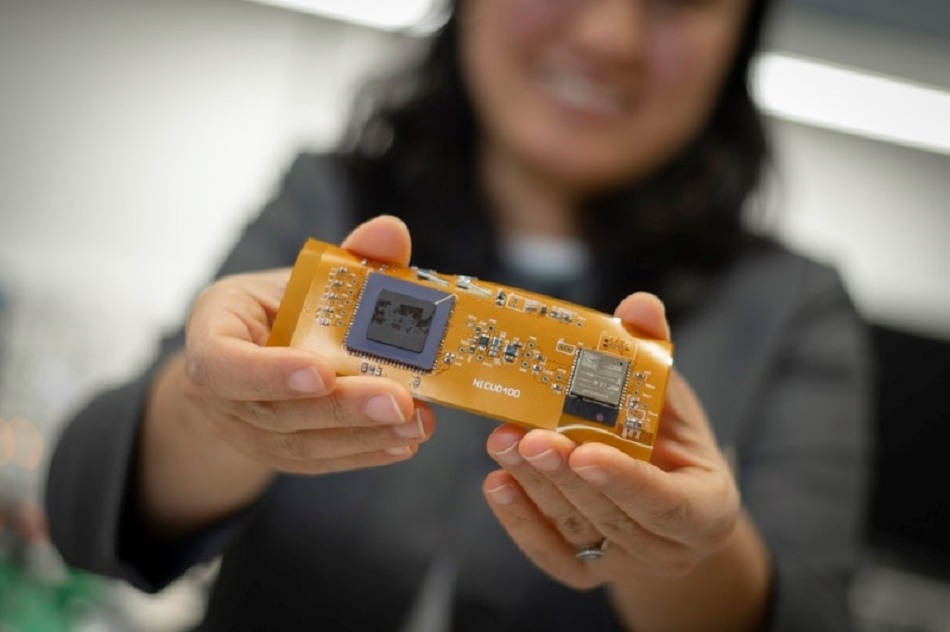
Image Credit: Worcester Polytechnic Institute
Researchers at Worcester Polytechnic Institute (WPI) in Massachusetts, US, have developed a miniature, wearable wireless oxygen sensor which can effectively monitor blood oxygen levels in babies.
The team’s device measures diffusing blood gases that pass through an infant’s skin, it can also wirelessly feedback recorded data. According to WPI, the device will be flexible and stretchable, as well as cost-effective.
The technology for monitoring blood oxygen levels in babies is vital as a part of routine care as it enables the identification of critical congenital heart defects and other medical conditions at an earlier stage, rather than waiting until symptoms appear. Current technology in place for monitoring blood oxygen levels in babies requires the infant to be tethered to machines with many wires, this could mean a prolonged stay in hospital as well as making it difficult for parents to handle their child.
However, with the device developed by WPI, sick, hospitalized babies could be easily handled and even allowed to go home at an earlier time as the system could allow home distance monitoring. “Extended stays in the hospital are costly and can be a strain on families,” said Professor Ulkuhan Guler, director of Worcester Polytechnic Institute’s Integrated Circuits and Systems Lab. “And studies have shown that babies’ health improves when they are with their families. Our goal with this affordable, mobile device is to give doctors more flexibility in monitoring their patients both in the hospital and at home,” she added.
Typically, the system used to measure oxygen molecule levels transcutaneously requires a monitor that weighs around 5 lbs to be plugged into an electrical outlet with all sensors wired to its interface. However, the device Guler and her team have created will utilize wireless power and data transfer. It also will make innovative use of IoT technology as it can connect to the internet wirelessly; thus, if there is a sudden decline in a baby’s oxygen levels an alarm directly connected to a doctor’s office or smartphone app would notify the relevant healthcare practitioner as well as the infant’s family members.
What’s more, is that the device is compact and discreet, around the size of a band-aid, with the capability to measure the partial pressure of oxygen (PO2). This feature gives a more precise index of respiratory health when compared with only oxygen saturation measurements. Guler and her team at WPI claim that their system, that measures PO2 levels via non-invasive means, is as conclusive as a blood test.
The next phase of project development is scaling-up the technology with an accompanying smartphone app for adult patients. With wearable medical devices, and other health technologies including smartphone and smartwatch apps constantly on the rise, the device as developed by WPI, with its IoT compatibility, could provide a boost to those suffering from conditions such as asthma, anemia, and heart disease.
Individuals would also be able to self-monitor from home while their medical data is tracked and accurately recorded for transmission back to their practitioners or medical care facility with little disruption to daily life.
Guler and her team of researchers and developers are now in the process of creating a chip that will function effectively within the wearable device. They have customized their design for optical-based read-out circuits which includes those of the driver circuits and signal capturing circuits.
Guler’s team will continue design work to incorporate power generation from a wireless link as well as boosting circuitry that is capable of digitizing and transmitting analog data. Once the team has fine-tuned the circuit and chip technology, they will then continue to develop thin, flexible sensors that will be robust and remain in place even when a baby, or patient is in motion.
The fast-developing market of wearable technologies opens up the possibility to relieve stress on strained healthcare systems as they could be put in place to monitor patients during post-surgery recovery to ensure no complications occur. This helps relieve any burden placed on medical staff and hospitals by allowing the patients to return home while still keeping monitoring their health and supporting rehabilitation.
Disclaimer: The views expressed here are those of the author expressed in their private capacity and do not necessarily represent the views of AZoM.com Limited T/A AZoNetwork the owner and operator of this website. This disclaimer forms part of the Terms and conditions of use of this website.